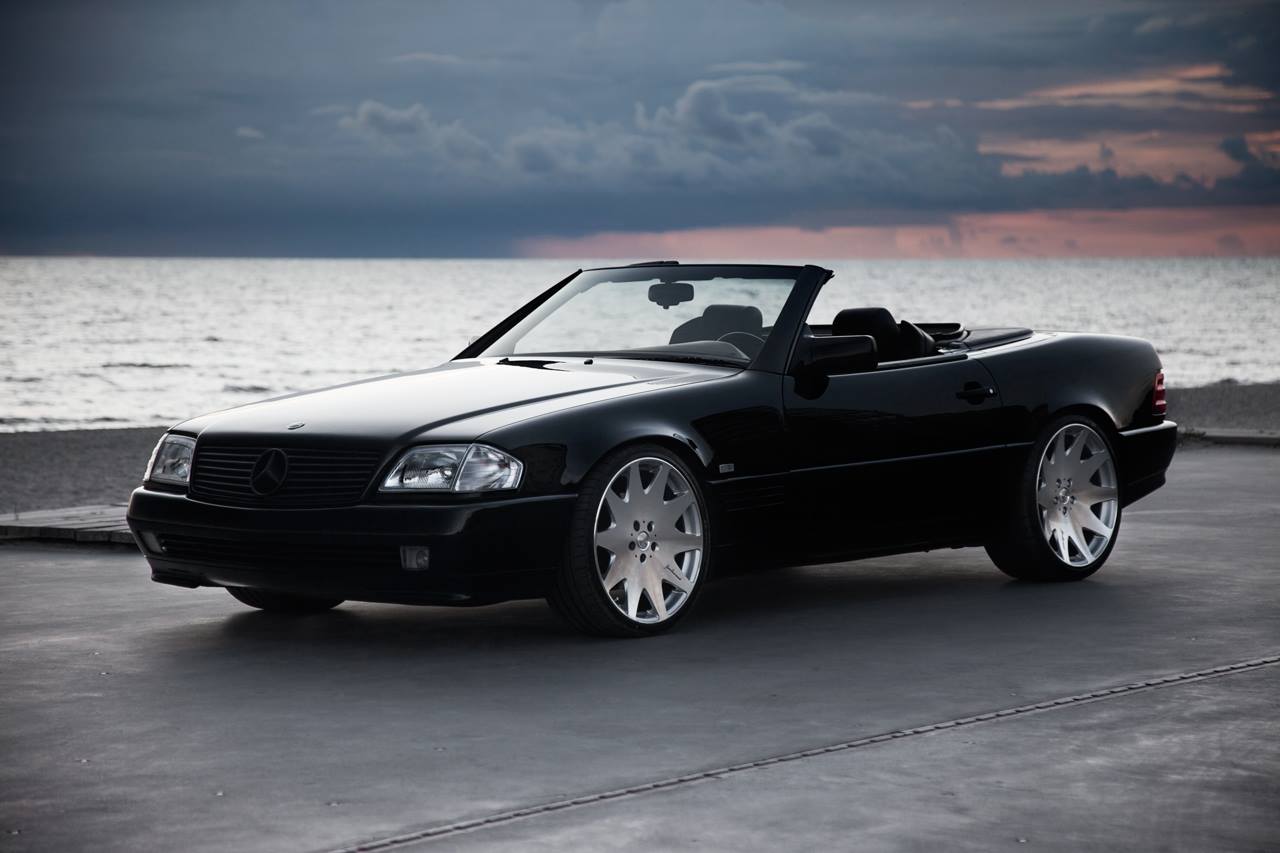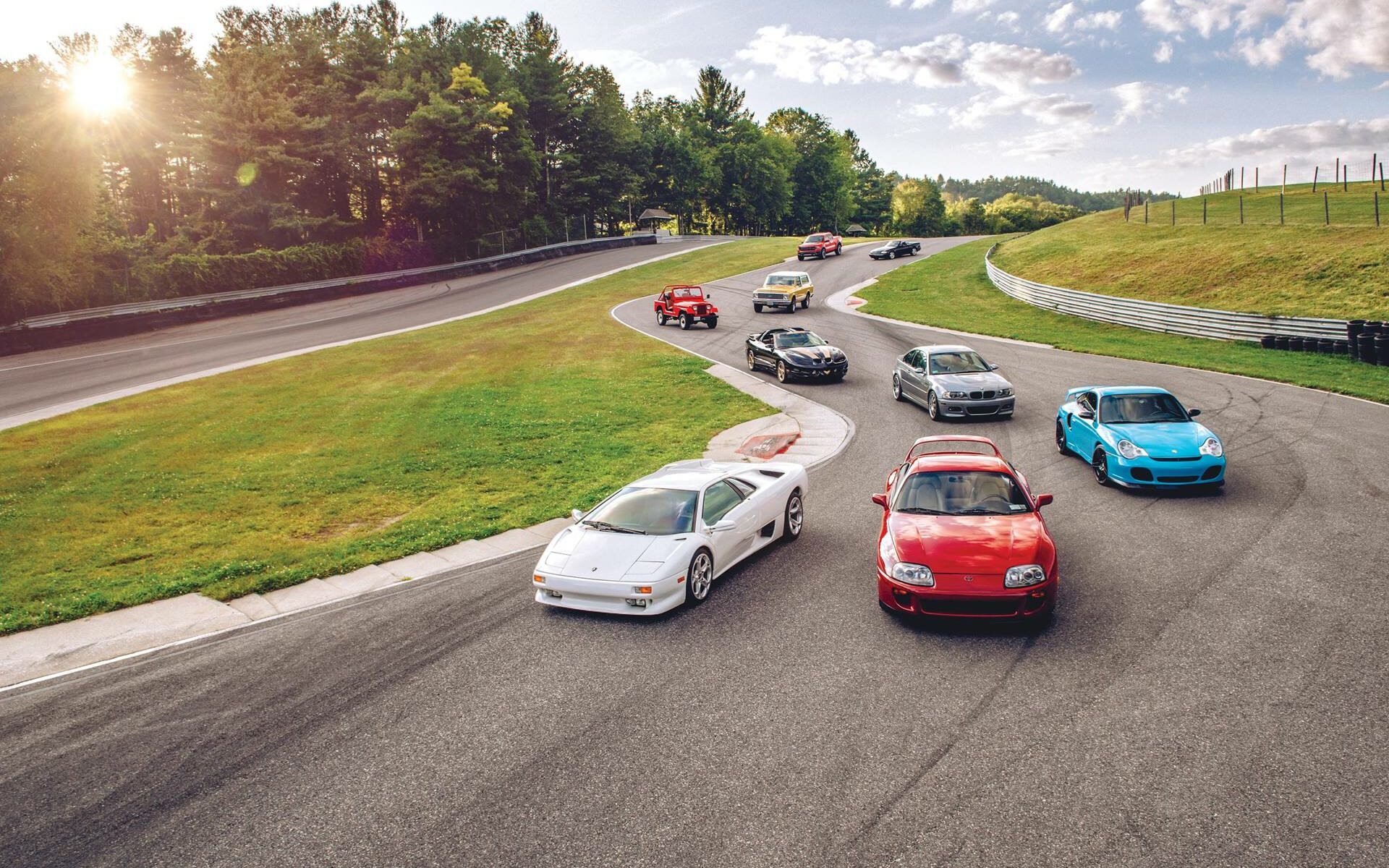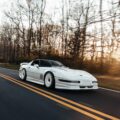De senaste åren så har bilvärlden gått från att köpa det man tycker är snyggt, till att köpa det som har bäst andrahandsvärde, till att köpa bilar som ren investering.
Den ständiga frågan är, hos alla verkar det som, vilken bil är nästa bil som ska nå ”samlarvärde”?
Och det tråkigaste är kanske, att numera är det inte bara onödigt rika människor som köper gamla, unika bilar för sjuka summor, utan nu tror alla att alla gamla bilar ska öka i värde.
Och visst, jag förstår ABSOLUT att en 35 år gammal bil, som inte byggdes i många exemplar, som är helt original, låga mil, i nyskick, att en sådan bil är värde mer idag än när den såldes som ny.
Men denna Porsche-bubblan, som tur nog har lugnat sig..
Det är bara tramsigt..
Nej din 7 år gamla Cayman är ingen samlarbil.
Nej en 94a 993 som är 3 krockade bilar ihop-svetsade till en skabbig bil, det är inget samlarvärde på den i heller, snälla förstå detta.
Jag tycker att jag har haft rätt angående många bilmodeller de senaste 15 åren.
Tyvärr så har jag bara inte kunnat köpa dem alla, och köper jag något så har jag väldigt svårt för att sälja det 😉
Och tyvärr, så måste jag erkänna, att jag har också fallit för hypen..
Ju dyrare vissa bilar blir, ju mer sugen blir jag på en, som NSX, 964, 993, Mercedes CE, 996 osv osv.
De flesta säger att ”The Collectors market” har nått sin peak nu.
Och det är bara bra.
Att en Ferrari-modell som bara har byggts i 5 ex, och som inte har sålts på 30 år, nu säljs för några hundra miljoner till någon samlare, fine, gör du så.
Men att alla gamla bilar plötsligt ska tripplas i värde, kommigennu!
Här är några listor från amerikanska Hagerty som visar vilka vinnarna och förlorarna var under 2018, och vilka bilar de tror på inom den närmsta framtiden.
Innan jag börjar så vill jag ännu en gång nämna mina 5 bilar som jag tror på.
** Mercedes SL R129
Billigaste landet i världen att köpa en R129 är fortfarande i Sverige.
Amerikanarna tror att man driver när jag visar våra svenska annonser.
** Corvette C4
De ligger rätt högt här hemma nu, sena årsmodeller med låga mil ligger på 170-200+ tusen kronor.
Det är vad de begär för dem..
Det har även varit en handfull C4or som de har begärt ytterligare några hundratusen för, men då har de gått typ 1 000 mil!
”Problemet” med våra C4or i Sverige är att de är bra och älskade bilar, så de flesta har faktiskt rullat sina 1 000 mil om året, men en 20 000 milare kan vara lika fin som en 10 000 milare, och en 1 000 milare skulle jag inte ens våga köpa.
ZR1or är ju de som absolut är först att nå samlarvärde, men en vanlig C4 kommer också att dubblas i pris rätt snart, hoppas jag.
** Mazda Miata NA/NB
** Porsche Boxster S 986
** Mercedes 500/560 SEC
Här är bilarna som Hagerty tycker är nämnvärda.
Både de som de tror på under 2019 och de som ökade mest under 2018, jag har blandat lite.
(Jag har tagit bort en del bilar som jag tycker BARA berör USA)
1992–2002 Mazda RX-7 (+22.86%)

Average value in #3 (Good) condition: $18,000
This was the year of the dog on the Chinese calendar, but for values it looks more like the year of the Mazda. All the Mazdas we currently price are up, and up by quite a bit. The third and final generation RX-7 is a more complicated and difficult car to live with than its humble predecessors, but it’s also a lot quicker, not to mention one of the best-looking cars of the 1990s. (Check out our FD RX-7 buyer’s guide here.) Peers like the Toyota Supra and Acura NSX already saw their big price surge before 2018, but solid, well-maintained, and unmolested twin-turbo RX-7s found a lot of appreciation over the course of the year.
Ja jag tycker att RX-7an också har ökat i Värde i Sverige också.
Ett tag så fick du en sådan en bra bit under 100 000 kr.
Det är en rolig bil, men du måste kunna mecka själv om du ska ha en.
1979–85 Mazda RX-7 (+27.93%)

Average value in #3 (Good) condition: $7100
Novel rotary powertrain aside, the first-gen RX-7 is a contrast to the later high-tech RX of the ’90s in that it’s relatively simple, easy to find, and cheap. But not quite as cheap as it used to be, it turns out. Average #2 (Excellent) values cracked five figures at the beginning of the year and went up from there.
En vän till mig köpte en superfin sådan för kanske 5 år sedan.
Jag var helt säker på att de skulle öka i värde.
Men det gäller att ha is i magen.
De flesta Japanska sportbilar kommer att öka i värde efter de har fyllt 30.
Kanske inte lika mycket som Datsun 240Z.
Men ändå.
1949–67 Volkswagen Beetle (+39.37%)

Average value in #3 (Good) condition: $15,800
Always collectible but rarely expensive, the Beetle nevertheless got a little pricier in 2018. Specifically, upward movement came from pre-1968 Beetles, which have always been the purest and most desirable that saw the most growth. The gap between sedan and convertible also grew substantially, with convertible values growing by an average of 61 percent across the board compared to just 12–15 percent for the sedans. Standout sales were a wonderfully restored and kitted-out 1956 convertible that sold for $72,800 at Amelia Island and a similarly-well-restored 1957 sedan that sold for $61,600 at Scottsdale
Bubblan..
En bil som du bokstavligen kunde köpa för ett par tusenlappar för några år sedan..
Och då fick du en reservbil på köpet..
De första med Split-window och cabbarna har varit dyra länge, då de har varit i fint skick.
Men nu är alla gamla bubblor dyra.
Absolut inte så dyra som i USA, men vi snackar ändå 30 tusen kronor för en skrotbil, och 100 000 kr för en riktigt fin.
1993–98 Toyota Supra Turbo

WHAT WE SAID:
Our quote requests are up 250 percent over the past 12 months, and the value is up 26 percent in the same period. This is the poster car for the Fast and Furious and Gran Turismo generation. It may even pass the Acura NSX, because unmodified examples are so rare.
WHAT HAPPENED:
- September 2017 avg #2-condition (Excellent) value: $65,200
- September 2018 avg #2-condition (Excellent) value: $69,214
- Change in value +6.16 percent
As of December 2018, Supra Mk IV Turbo values haven’t surpassed 3.0-liter NSX values, but the Supra closed the gap down to just 37-percent shy of an NSX, from a previous 54 percent. The interesting thing with the Mk IV was that as soon as the 2018 list was published we stopped seeing quality cars come up for sale. Quote counts for these cars, which had jumped over 200 percent in 2017, saw just a 5 percent increase in 2018, but average quoted value was up over 11 percent in 2018.
These still aren’t auction cars—only five publicly crossed the block in 2018. Privately owned low-mile, quality examples are trading hands north of $100,000, but we don’t expect that to become the norm in the near future. Interest in these cars is driven by millennials who make up over 50 percent of all quotes, but given the limited budget of younger collectors we suspect most are getting priced out of the Turbos and are shifting their eyes to the naturally aspirated cars. Over the next year we expect minimal gains if any on the Mk IV Turbo.
Jepp… Det är helt tokiga priser på dessa nu i USA.
Främst pga att de nu är lagliga att köra med i USA.
Det är nästan NSX pengar på en Supra.
Det såldes en original (kom ihåg, original håller alltid bäst värde) lågmilare nyligen i USA för 121 00 usd….

Det var visserligen en Toyota-återförsäljare som köpte den.
Och de har nu i sin tur lagt ut den för 500 000 usd.
Men de säger att det priset satte de för att slippa svara på samma fråga 20 gånger om dagen ”vad säljer ni den för?” och för att den inte är till salu helt enkelt.
Men visst, SKULLE någon betala en halv miljon dollar för den så fine.
Men oavsett, detta kommer göra att fina, ORIGINAL Supror snart kommer att kosta en miljon kronor i USA rent allmänt.
Och nu när folk är så besvikna på den nya Supran, så kommer den gamla Supran att bli ännu mer hypad.
1990–98 Mazda MX-5 Miata (+48.4%)

Average value in #3 (Good) condition: $6100
The first-generation (aka “NA”) Miata made a huge splash when Mazda brought it out in 1989. The cheap roadster had been dead for about a decade, but the Miata revived it and has owned that market ever since. On balance, it’s been just about the best sports car for your money for almost 30 years. But because “Miata is always the answer” and because they’re cheap, a lot of them have been raced, modded, or just generally beat on. This means that nice, collector-grade examples are increasingly rare, and 2018 showed that the charm of those adorable pop-up headlights and smiley grille are in high demand.
Jepp… En begagnad Miata har alltid kostat 50 000 kr.
Förutom när jag försökte sälja min..
Nu när jag är sugen på en igen, så är det absolut 20-25 tusen kr dyrare än förra våren.
Men jag vill skylla allt det på en kille i Jönköping som la ut sin allt för billigt, och den blev inte ens såld för det priset, det pajade marknaden totalt, länge.
Men nu har den återhämtat sig för Miatan.
Dagens Bil : 4 Generationer Mazda MX-5 Miata 1989 NA – 2017 ND
1998–99 Mercedes-Benz CLK GTR (+58.33%)

Average value in #3 (Good) condition: $3M
To be clear, the CLK GTR is a hard car to set values on because just 26 road cars (20 coupes and six roadsters) were built, and they don’t change hands often. Before 2018, the last one to sell at auction was at Goodwood way back in 2015. It brought $1.9M, but in Monterey this year there was enough pent-up demand that another 1998 model sold for $4.5M. That’s the benchmark until another one of the 26 CLK GTRs surfaces.
Ja dessa har blivit väldigt populära det senaste året..
En gång världens dyraste bil, och idag kostar den 3 gånger mer än det.
Detta har alltid varit en underskattat bil, snygg, snabb, fungerar i trafik trots att det är en LeMans bil, väldigt sällsynt, likadan motor som i Pagani Zonda, osv osv osv.
Men alla mångmiljonärer har bara brytt sig om Ferrari osv.
https://www.sirpierre.se/2010/04/2st-clk-gtr-snart-till-salu.html
1990–98 Lamborghini Diablo

WHAT WE SAID:
The last “real” Lambo before Audi bought the company, and the last analog supercar before shift paddles and computer nannies. They have poor sell-through at auctions because owners have high expectations, they don’t need to sell, and they’re often willing to wait for someone to overpay.
WHAT HAPPENED:
- September 2017 avg #2-condition (Excellent) value: $170,522
- September 2018 avg #2-condition (Excellent) value: $189,696
- Change in value +11.24 percent
The Diablo has a lot of features that old-school car collectors value, like the manual transmission and totally analog driving experience. Preference for characteristics like that don’t change over a short period of time, but auction metrics do. We saw a 60-percent increase in the number of Diablos offered at auction this year (from 10 to 16), but sell-through rate also jumped from 20 percent last year to 44 percent this year. That means not only are there more cars crossing the block, but a higher percentage are actually changing hands.
Of the 16 cars offered, Hagerty personally inspected seven of them and determined that four of the seven sold above market value relative to their condition. The number of cars we quoted fell slightly from 53 last year to 48 this year, and the percent of quotes from younger collectors fell from 57 percent to 48 percent. In general, interest from younger buyers is a good sign of value appreciation going forward.
Despite the growing presence at auctions , the waning insurance quote metrics reel in our otherwise expectations. We’re expecting a slight increase in values over the next year but nothing like the 11 percent we saw in 2018.
Ja, nästan alla V12 Lamborghini har ökat de senaste åren, rätt rejält med.
En Diablo kunde du få för under 700 000 kr här hemma förr.
Idag får du sätta en 1a framför den summan.
2001–05 Porsche 911 Turbo

WHAT WE SAID:
Another substitution car, meaning as other 911s rise, the overlooked 996s now seem incredibly undervalued. Not everybody loves the puddle headlights, but if you want a six-speed manual in a 400-hp German car, there aren’t a lot of options. In 2015, these cars bottomed out just as the air-cooled market hit its peak, but we’ve seen examples go for more than $100,000.
WHAT HAPPENED:
- September 2017 avg #2-condition (Excellent) value: $54,813
- September 2018 avg #2-condition (Excellent) value: $56,093
- Change in value +2.34 percent
When grading ourselves we measured the success of our predictions based on a 5-percent increase in value over a 12-month period. This was the one car where we missed the mark.
There were tons of signs that the 996-generation Porsche 911 was about to take off: Quotes were up 13 percent, the number of cars offered for sale at auction jumped from just six in 2016 to 23 in 2017, 67 percent of cars offered for auction in 2017 earned bids at or above market values per their condition, and there was a lot of buzz about how great and underrated a car the 996 Turbo is kept popping up. But none of that translated into significant value growth in 2018.
In reality these cars suffer from the same problems that a Mk IV Supra does; there just aren’t a lot of quality examples left on the market. The difference with the Porsche is that we haven’t seen many quality cars selling well above market values either.
Ja de låg länge på runt 400 000 kr.
Vilket var väldigt mycket bil för pengarna.
Och alla andra 911 modeller gick om 996orna i pris.
Och Turbona gick saaaakta upp i pris.
Tills 2018… Då helt plötsligt så nästan dubblades priserna..
Vissa..
Du kan absolut fortfarande hitta dem för 400 000 kr.
Där är just nu 2 st till salu för cirka 450 000 kr, 8 000 mil resp 9 800 mil, och de har inte blivit sålda ännu.
Skulle du bjuda 400 000 för någon av dem så är den bilen din.
Men sen så har vi också de 2 dyraste, 765 000 och 799 000 kr.
Men de är inte heller sålda 😉
2000–06 BMW M3

WHAT WE SAID:
The last M3 before it got a lot bigger and heavier. A real driver’s car, with just enough power that you can drive it and enjoy it without getting a ticket in third gear.
WHAT HAPPENED:
- September 2017 avg #2-condition (Excellent) value: $28,979
- September 2018 avg #2-condition (Excellent) value: $35,286
- Change in value +21.76 percent
The E46-generation BMW M3 was the big winner from our list last year, jumping over 20 percent in value. Part of the pricing update process involves talking for dealers to get their input on recent sales, and they mentioned a huge increase in the last year. We saw quotes jump 17 percent in 2018 with 75 percent of quotes coming from younger collectors.
These cars aren’t yet showing up at the major in-person North American auctions, but there were almost 100 offered online through Bring a Trailer in 2018, and a couple sales topped $50,000. We see no signs of these slowing down and we probably could have safely included them again in the upcoming 2019’s Bull Market list.
Ja det är ju ingen hemlighet att detta är den bästa M3an hittills och förmodligen någonsin.
CSL går för tokiga priser..
Men jag hade ändå hellre köpt en M2.
1990–2002 Mercedes Benz SL500/500SL (R129)

WHAT WE SAID:
The SL is the best example of substitution in the collector-car space, meaning that those who are priced out of one generation automatically look at a newer generation that is more affordable. The R129’s depreciation finally bottomed out and it’s the next SL on the list to climb the ladder. Right now it’s the most affordable of the top-of-the-line Benzes.
WHAT HAPPENED:
- September 2017 avg #2-condition (Excellent) value: $15,760
- September 2018 avg #2-condition (Excellent) value: $17,030
- Change in value +8.06 percent
Last year we highlighted the substitution effect as the main driver of values for the R129 SL, and that assessment proved true. The 300SL, 190SL, 280SL, 350SL/450SL, and 560SL all fell in value in 2018, leaving only 380SL and 500SL/SL500 as cars not actively losing value.
Sell-through rate at public auctions fell slightly from 81 percent to 79 percent in 2018, but average sale price jumped 11 percent. Quotes for the R129 SL were only up 4 percent which is slightly behind other ’90s German cars and of the 28 cars that Hagerty inspected at auction this year we found that 48 percent received high bids under market values. That said, RM Sotheby’s recently announced “Youngtimer” collection could reignite the fire for ’80s, ’90s, and 2000 German collectibles over the next year. It’s unclear where there R129 SL is this time next year we wouldn’t be surprised if they’re still worth $17K or $25K.
Jag tycker att de står rätt stilla här hemma.
Det har varit två exempel som förstörde marknaden totalt här hemma, och vi har inte återhämtat oss ännu efter det.
Den ena bilen var en 91 AMG med cirka 5 000 mil på mätare, som min kusin ägde, han blev pank, och la ut bilen för 95 000 kr!
Vilket skrämde bort seriösa kunder.
Ingen åkte ens och kollade på bilen, så han sänkte priset!
Och under denna tiden så fick bilen en del onödiga skador, trasig dimljus osv.
Så när någon seriös åkte för att kolla på bilen, så blev de avskräckta, en smutsig, onödigt småskadad lågmilare.. hmm något stämmer inte.
Och sen så var den en bilfirma som snabbt ville bli av med en väldigt fin röd SL, och de lägger ut bilen för 59 000 kr…………
Sen var det kaos på marknaden!
Du hade nästan svårt att hitta en SL R129 som kostade över 100 000 kr!
Helt helt galet!
Idag så ligger den billigaste på 100 000 kr och den dyraste på 500 000 kr.
OBS!!! Vi snackar om en fin gammal cabbe och mitt i vintern! Ingen köper en cabbe på vintern och speciellt inte Januari/Februari.
I Tyskland så ligger den billigaste på 8 000 euro (typ som här hemma då) och den dyraste kostar 129 000 euro.
Och nej, denna gången så är de dyraste inte AMG 73. BRABUS osv, utan bland de topp 10 dyraste SL R129 just nu (kom ihåg, vinter) i Tyskland är där faktiskt 5 st 320 och 1 st 280 !
Ja, de sista åren så föredrar folk de mindre motorerna, de allra sista åren så såldes det utan tvekan fler 320 än 500.
Så bland topp 3 dyraste i Tyskland så är det 1 AMG och 2 st 320.
En liknande vår dyraste i Sverige, Den som kostar 500 000 kr här hemma, kostar 75 – 93 000 euro i Tyskland.
Så minst 250 000 kr mer i Tyskland än här hemma alltså för en likadan modell med lika många mil och samma årsmodell.
Så ja, SL R129 kommer att bli dyrare, och ska du köpa en billigt så är det här i Sverige de är som billigast.
Här har ni mina samlade länkar med väldigt bra inlägg om SL R129
Dagens Notiser : Vad en gammal Mercedes-Benz SL R129 skulle kostat idag
Här är 2018 års förlorare
1972–80 Mercedes-Benz 350SL/450SL (-9.95%)

Average value in #3 (Good) condition: $15,100
Mercedes SL values are on something of a roller coaster ride over the past few years, and for the R107 (350/450SLs) most of 2018 was that part of the ride where you’re going down, very quickly. In 2015 these cars followed the growth in interest for earlier SLs and shot way up, in some cases nearly doubling in value. The plateau was in 2016, and then prices began to slide to more realistic levels (as they did for earlier 190SLs and 230/250/280SLs).
Det är faktiskt skönt att se att dessa har lugnat sig.
Dessa gick från 80 000 kr till närmare 300 000 kr på ett ögonblick.
Jag har sett R107 säljas för över en halv miljon kronor också.
Men då snackar vi sista årsmodell, 560, nyskick.
Men problemet här var att ALLA som hade lite balls och en slant över, köpte hem alla R107or som de kunde ifrån USA.
Så på väldigt kort tid så hade vi väääldigt många R107 till salu på blocket, många av dessa som sålde bilarna orkade inte ens regga in dem, de försökte till och med sälja bilarna innan de ens hade kommit till Sverige, med en enda suddig, dålig bild på bilen.
Detta gjorde att Sverige svämmade över med R107, och de flesta i RIKTIGT dåligt skick.
Och nu är de nere på normala priser igen.
Vilket ändå glädjer mig, för att jag vill ju fortfarande ha en R107 nån gång.
Jag har varit väldigt nära att köpa en väldigt många gånger, men det krävs ytterligare en garageplats då.
De är fortfarande lite dyrare än vad jag skulle vilja betala för en sådan.
Men jag tror faktiskt att det är dessa priser som gäller nu.
Nu mitt i vintern så finns det 33 st R107 till salu på blocket.
En skrotbil för 100 000 kr, de flesta ligger runt 150-170, och sen är där ett par drömmare som begär över 300 000 kr.
Dagens Ladufynd : Bob Marleys sista bil – Mercedes-Benz 500SL
1976–89 Porsche 911 Carrera (Turbo 930) (-10.95%)

Average value in #3 (Good) condition: $123,900
Porsche 930s did not have a very good 2018, but they didn’t have a very good 2017 either. Caught up in the feeding frenzy for all things air-cooled and Porsche, 930s went from five-figure collector cars to selling for more than $200K, in some cases, over the course of about a year, finally peaking in 2015. It’s been a downward slope ever since, but it’s worth noting that a rough 930 today is still worth more than an absolutely perfect one was in 2013.
Så ja!
Luuugna sig liiite nu va.
Ja en 930 Turbo är en av de absolut coolaste Porsche modellerna någonsin!
Absolut!
Men detta är ett tecken på att Porsche-bubblan har lugnat sig lite, och till och med sjunkit lite.
993orna har lugnat sig, nu är det mest Turbomodellerna som är svindyra, som alltid.
997orna ses åter igen mest bara som en begagnad 911.
Och tack och lov så har 924 och 944 lugnat sig, och nästan hunnit med att både dubblats och sen halverats i pris under samma år.
Dessa Porsche modeller med en Audi motor i fronten ska alltid bara billiga ”grabb-bilar”!
Det som förvånar mig mest är att 996 Turbo har ökat så mycket, och så sent.
Snacka om Ketchup-effekt 😉
Ja det är nog få modeller som kommer att sjunka mycket i pris, och Porsche-bubblan kommer aldrig att spricka.
Men detta är ett gott tecken ändå.
Jag menar, det är flera år i rad nu som MÅNGA bilar har sålts för MÅNGA GÅNGER över vad de har förväntats att dra in som mest på auktioner världen över.
DET är galet!
Och jag vill ju se såna här gamla, underbara bilar ute på vägarna och på träffar.
Inte bara stå någonstans och öka i värde som en staty.
2014–15 McLaren P1 (-15.56%)

Average value in #3 (Good) condition: $2.1M
The hybrid hypercar trio of McLaren P1/LaFerrari/Porsche 918 was a big deal. These cars were collectible right out of the box, so we added them to our valuation data as soon as they hit the second-hand market. The P1s that came to auction routinely brought $2M or more in 2017, but apparently the excitement wore off and demand just isn’t as high. The last one to sell at auction brought $1.435M, which isn’t far off of what it cost new.
P1an är faktiskt den enda av den senaste ”holy Trinity” som inte har ökat i värde.
918 och LaFerrari har ju redan minst dubblats i värde.
P1 GTR gick från 35 miljoner till 100 miljoner kronor över en natt, men nu har även de stannat vid 65 miljoner har jag för mig.
P1an kostar fortfarande mer idag än vad de kostade som nya.
Men varför de inte har ökat mer är för att McLaren har spottat ut modeller sedan P1an kom.
Bra modeller också, speciellt 720S gör att man inte känner något behöv för att betala 4 gånger mer för en P1.
Porsche och Ferrari har också släppt bilar som är snabbare än deras hybridvärstingar. GT2-RS osv.
Men ingen bil som är så nära som toppmodellen, så som 720 är med P1.
Och här är de bilar som de tror kommer att öka mest under 2019.
1972–75 BMW 3.0CSL
.ashx?modified=20181231142655&mw=1000&hash=8167BB9EBE7EAB8FA18C62A120ED720B3C80733D)
So much of BMW’s celebrated iconography is rolled up in this one big 1970s coupe. It launched BMW’s M motorsport division. It was part of a family of vehicles that introduced the upturned stop to the rear quarter-window line, the Hofmeister kink, that has been used by BMW for decades and relentlessly copied by others. It pioneered the use of BMW’s tricolor racing stripes, the blue representing the Bavarian flag, the red honoring an early racing partnership with Texaco (bet you didn’t know that), and the purple wedged between them as a bridge. In 1975, the avant-garde painter and sculptor Alexander Calder went to town on one, establishing BMW Art Cars as a thing. Just 1265 3.0CSLs were made, making it as rare as many vintage Italian exotics. On the blue-spinner hierarchy, BMW collectors have recently started valuing them only below the illustrious 507 roadster, the M1 supercar, and the 503 coupe.
The scarcity of CSLs in America is driven by the fact that of the several iterations made—from the earliest 180-hp, 3.0-liter carbureted model that debuted in mid-1971 to the final 206-hp, 3.2-liter injected version that closed out production in late 1975—none was officially imported to the U.S. It was a European homologation special, assembled under contract by Karmann, with thinner steel and several aluminum panels to shave more than 400 pounds from the standard 3.0CS. A warbling inline-six tuned for racing turned the wheels, Bilstein shocks augmented the revamped suspension, and winglets and dams shaped the airflow. One version even came with a big wing tossed in the trunk but not factory fitted because such things were technically illegal for the road—all so BMW could enter the car in the German Touring Car Championship.
If you swear you’ve seen one before, it was probably a BMW 3.0CS, a lovely autobahn eater that went on sale in the U.S. in 1970. Its four round, 5.5-inch headlights, another BMW hallmark introduced by this model, made the car federally compliant, and it became the face of the twin-kidney brand for two decades. So many firsts and so few examples—that is the essence of a collectible car.
1973 BMW 3.0CSL
Engine inline-six, 3153 cc
Power 206 hp @ 5600 rpm
Torque 211 lb-ft @ 4200 rpm
Weight 2800 lb
Power-to-weight 13.6 lb/hp
0–60 6.5 sec
Top speed 137 mph
Price when new $10,214
Hagerty value $218,500–$264,700
THE HAGERTY VALUATION TEAM SAYS:
These cars aren’t common, and their values are up 10 percent in the past 12 months. Even though #2 cars are valued at $250,000, we think there is room to grow. BMWs saw the second-highest insurance-quote increase over the past year (after Jeep), and many of the quotes are for people under 55 years old. BMW and Porsche draw many of the same buyers, and as Porsche values grow and price people out, BMWs get more attractive.
Jag tycker ju inte alls om BMW.
Men jag har haft koll på dessa (främst de vanliga 3.0) under flera år åt min väns vägnar.
Och ja, de har ökat för varje år.
Nu när han till sist köpte sig en superfin 3.0 så slutade jag att bevaka dem.
Och cirka ett år senare efter han hade köpt sin så kollade jag igen, och jepp, de fortsätter att öka.
1997–2004 PORSCHE BOXSTER
.ashx?modified=20181231143802&mw=1000&hash=F59B5DE167B858AFD7373A514CAE7A57C04FC7D6)
The recession of the early 1990s had been hard on Porsche, and the nearly bankrupt company was in survival mode. Determined not to be so vulnerable again, Porsche hired a team of former Toyota consultants to help streamline production and rationalize the product line, introducing an SUV and relaunching an entry-level mid-engine volume model akin to the old 914. From the windshield forward, the ensuing 1997 Porsche Boxster was nearly identical to the 996-generation 911, which was released almost at the same time. Jointly developing the two cars drastically cut Porsche’s engineering and production costs, helping loft the company to the exalted position it enjoys today as the industry’s most profitable company on a per-unit basis.
Although that first Boxster may have benefited from the advice of the makers of soulless Japanese appliances, it is hardly without a soul. Low, curvaceous lines, a wailing flat-six, and highly organic handling made the Boxster an instant car-magazine favorite, moving one jaded journalist to declare it was “so much fun that it’s gotta be a sin.” The demand for those early cars was so strong that Porsche shelved plans for the more powerful S model until 2000, as the assembly lines in Germany and Finland were already strained to capacity.
The large number of cars built and some known quality issues mean the values for this genuine son of Stuttgart have depreciated into widely affordable territory. You can be lapping up the top-down delights of a Boxster while enjoying nearly perfect ergonomics and carving your favorite road to ribbons—all for $15,000 or less. The Boxster is everything a Porsche should be: luxurious, thrilling, and above all fun.
2003 PORSCHE BOXSTER S
Engine flat-six, 3179 cc
Power 258 hp @ 6200 rpm
Torque 229 lb-ft @ 4500 rpm
Weight 3000 lb
Power-to-weight 11.6 lb/hp
0–60 5.3 sec
Top speed 162 mph
Price when new $51,600
Hagerty value $13,800–$17,200
THE HAGERTY VALUATION TEAM SAYS:
Why this car got cheap: It has the early ugly headlights, the intermediate shaft bearing problem, and a reputation for poor build quality. But 15 years after production ended, there’s a fix for the bearing, and most survivors will have had it done. Many people who could buy a $50,000 car new are the kind who do the maintenance and keep records.
Boxstern har ALLTID varit en underskattat bil!
”Frisörbil” bla bla bla
Det är en lagom snabb, perfekt balanserad och framförallt rolig bil att köra.
Men som vanligt så är det först när de kostar under 100 000 kr som folk får upp intresset för dem, främst för att det då är en billig bil att köra bana med.
Men dessa har alltså länge kostat ”Miata pengar” i Tyskland, ja bokstavligen..
Så sen innan jag hade min Miata så har jag funderat på att ta hem en Boxster ifrån Tyskland.
Nu under detta senaste året så har de gått upp cirka 50% i pris.
Så jag tror fortfarande starkt på Boxster, men nästan bara på S modellen.
Tur för er så var där en som la ut sin Boxster S på blocket för 110 000 kr häromdagen, så ja, ännu en bil som har pajat marknaden för ett bra tag framöver.
Så ska du köpa en Boxster S Gen 1 så är det NU som gäller.
1996 CHEVROLET CORVETTE GRAND SPORT
.ashx?modified=20181231143233&mw=1000&hash=8B588D5C2C3D2E222D1DBDA737979B8F667A1C2E)
Old names carry big weight in the Corvette world, mainly because Chevrolet, wisely, has never tossed around badges such as Z06, ZR1, and Grand Sport lightly. When you laid out for one of the special Vettes, you truly got something for your money: substantially more horsepower, for one thing, plus exclusive trimmings and maybe a pleasing retro paint scheme. People who buy Corvettes tend to like the fact that they’re joining an old and illustrious family, and the 1996 Grand Sport plainly evokes the model’s racing heritage.
A one-year gift to the Corvette faithful to celebrate the close of the C4’s 12-year production run, the RPO Z16 Grand Sport option was collectible the minute the first of the 1000 examples—810 coupes, 190 convertibles—hit showrooms. Yes, for another $3250 above the Corvette coupe’s $37,225 base price, you got more power, as the placard on the center console next to the six-speed shifter proudly proclaims. Besides calling out the LT4’s 330 horsepower and 340 pound-feet of torque, the placard tells you in large type that the 5.7-liter engine has a 10.8:1 compression ratio, not a common stat found on an interior car badge.
After building Corvettes for four decades, the Chevrolet of the mid-1990s knew that its Vette customers like to quote figures because they get asked a lot.
You could have any color as long as it was Admiral Blue with an Arctic White “skunk stripe” down the center and twin red hash marks on the driver’s front fender. The majority came with black interiors, but a few years ago, John Crynock—who owns two Vettes, this GS and a ’98 Indy Pace Car Replica—pounced on one of the 217 Grand Sport coupes delivered with red seats. The C4 will rocket you back in time in terms of interior electronics and GM build quality, but the rumbling LT4 can still rocket you forward with equal ferocity. The view over the wide bat-wing hood has been and will remain a Corvette trademark, at least until the mid-engine Vette arrives next year to once again evolve the Plastic Fantastic.
1996 CORVETTE GRAND SPORT
Engine V-8, 5733 cc
Power 330 hp @ 5800 rpm
Torque 340 lb-ft @ 4500 rpm
Weight 3400 lb
Power-to-weight 10.3 lb/hp
0–60 5.2 sec
Top speed 168 mph
Price when new $37,225
Hagerty value $36,100–$49,500
THE HAGERTY VALUATION TEAM SAYS:
Just 1000 examples built in one year means these cars are rare, fast, and distinctive. In a Corvette—in fact, in most cars—those factors add value. Plus, most Grand Sports were treated as collector cars from new, which means lots of low-mileage choices out there.
Grand Sport är ”The Final Edition” av C4an.
Den är kanske inte den starkaste, men den är nästan lika snabb som ZR1.
Typ..
De vanliga C4orna är snabbare än vad de angav att Grand Sport var, och Grand Sport är nästan lika snabb som de angav att ZR1 var.
Och ZR1 är grym!
Så ja, alla Corvette C4or från 92 och framåt är snabbare än de officiella siffrorna.
Corvette C4 är ännu en modell som länge har stått stilla i pris.
De har ”alltid kostat” runt 100 000 kr, oavsett årsmodell eller mil.
De flesta har köpt en C4 för utseendet och ljudet, så det har inte haft så stor betydelse vilken årsmodell/motor bilen har haft.
Jag rekommenderar dock starkt och nästan enbart att ni köper en C4 med LT1 motor, dvs 92 och framåt.
Men ska ni bara glida runt så duger 240 hk motor och väl.
Den stora förändringen med C4orna och prisbilden är som alltid.
De senare årsmodellerna som kanske var lite dyra att försäkra pga effekten, har nu blivit så gamla att de också kan entusiastförsäkras för under 2 000 kr om året, i vissa fall 1 000 kr om året!
Det plus att det är en rätt simpel bil när det kommer till delar, lätt att mecka med, och alla andra förutom mina bilar dricker 1.1-1.3 liter bilen.
Plus att de är sjukt snygga och ser ut att kosta flera hundra tusen kronor.
Och vi som växte upp med dessa som drömbilar, har nu lite ålderskris, och känner att vi kan unna oss en gammal drömbil som inte kostar något om den bara står och är snygg eller om man ska glida runt på fina sommardagar.
Men jag kan också bekräfta att de funkar året om 😉
Så ja, alla dessa saker är klassiska tecken på att en bil börjar öka i värde.
Just Grand Sport byggdes bara 1996, de hade alltid manuell låda och 330++ hk.
Så ja det är klart att de kommer att ligga högre i kurs än de andra.
Men rent allmänt så tror jag på C4an.
Om du köper en så kommer du absolut inte att ångra dig!
Jag verkligen älskar mina.
2004–07 SUBARU IMPREZA WRX STI
.ashx?modified=20181231144436&mw=1000&hash=A731E670AF51DE592825CF5EAE53230AEBB90BD4)
A whole generation of drivers learned the letters STI through video games. Before then, the vehicles produced by Subaru Tecnica International, the company’s racing division, were obscure Japanese home-market homologation specials built to support Subaru’s efforts in international rallying. By the early 2000s, however, buyers in North America, familiar with cars like the WRX STI from Gran Turismo and other games, were demanding to be let in on the fun. The first U.S.-legal WRX turbo appeared for the 2002 model year, followed shortly by an even heavier-breathing STI version, and Nipon nerds delighted in the brief turbo-tech war that ensued between Subaru’s all-wheel-drive hot rod and the similarly exotic Mitsubishi Evo.
The STI had big wheels, a big wing, big suspension upgrades, and a big engine. The 2.5-liter flat-four munched on 14.5 psi of boost to make 300 horsepower and 300 pound-feet of torque in a car weighing 3300 pounds. It’s worth noting that, 15 years later, the 2019 model makes 310 horsepower and 290 pound-feet of torque, and the base STI now weighs about 200 more pounds. In other words, unlike many long-running models, that first STI was in some ways the best.
Owner Rich Schaars bought a new WRX in 2002 and in late 2003 tried to trade it in for an STI, but the dealers wanted huge markups. He waited them out over the winter, and by the spring of 2004, dealers were ready to sell at list. More than 100,000 miles and a full engine rebuild later, Schaars’s STI is otherwise remarkably well preserved, accelerating and steering as fiercely as it did when new while evoking Subaru racing glory with its gold wheels and British American Tobacco blue paint.
The years have passed, Mitsubishi has faded, and Subaru no longer wants to talk about its rallying days, somehow believing that creates a hooligan cloud over a brand that is trying to move upscale to become a sort of discounted Audi. You couldn’t even get blue paint over gold wheels on an STI for a while, and now only the limited-edition $50,000 WRX STI Type RA offers the combo. So, although you can buy a new STI, you can really no longer buy a car as weirdly special as that first one.
2004 SUBARU WRX STI
Engine flat-four, 2457 cc
Power 300 hp @ 6000 rpm
Torque 300 lb-ft @ 4000 rpm
Weight 3300 lb
Power-to-weight 11.0 lb/hp
0–60 4.9 sec
Top speed 155 mph
Price when new $32,000
Hagerty value $25,700–$33,700
THE HAGERTY VALUATION TEAM SAYS:
The real-life versions of the cars we played in Need for Speed were too expensive for the kids who wanted them. But as those kids became adults and made money, the cars got older and cheaper. Good examples are hard to find today, but they are that much more valuable.
Ja, ”Hawk-Eye” är absolut den snyggaste Imprezan, och kanske den roligaste.
En sådan i Solberg Edition skulle jag gärna vilja ha.
1985–89 TOYOTA MR2
.ashx?modified=20181231144614&mw=1000&hash=44248C9CA10D33D59AEE8C07C40B24020ABD45AC)
The House of Camry isn’t really known for its sports cars, but Toyota has produced a few gems, including the 2000GT and lesser known Sports 800, both from the 1960s. It was the memory of the tiny Sports 800 plus the 1970s energy crisis plus the rapidly growing North American market that inspired Toyota to launch the lightweight (and lightly powered) MR2 in 1985. The odd name equated to “midship-engine runabout two-seater.” The MR2 may have been a 1970s idea, but it was fully teased-hair, floppy-disk, boombox 1980s when it arrived priced around $12,000 and shaped like Tron’s door stop.
A 1.6-liter, twin-cam, 16-valve four producing a mere 112 horsepower growled behind the seats of this junior Ferrari. But the car weighed a mere 2400 pounds, and the engine could zing to 7500 rpm, which ensured that even the dullest commute would have its moments. Everything was light, from the flickable five-speed gearbox to the two-spoke steering wheel that worked the 185/60-14 tires to the way it pranced through corners.
Almost immediately after introducing the MR2, Toyota started piling on features: first, optional T-tops and monochromatic side skirts, then a 145-hp supercharged engine in 1988. The 0-to-60-mph time dropped from about eight seconds to 6.5, but the price jumped to almost $20,000. The MR2 was moving uptown, and a 1990 redesign rounded off all the edges and significantly increased the size, weight, and horsepower.
Owner Jeff Miller was born after his MR2 Supercharged was made and says he had no particular interest in them or in cars in general until playing a video game that included the original MR2. Now Miller owns two of them. A Toyota that converts young people into car collectors? Domo arigato, Mr. Roboto!
1988 TOYOTA MR2 S/C
Engine inline-four, 1587 cc
Power 145 hp @ 6400 rpm
Torque 137 lb-ft @ 4400 rpm
Weight 2600 lb
Power-to-weight 17.9 lb/hp
0–60 6.5 sec
Top speed 130 mph
Price when new $19,750
Hagerty value $10,800–$14,100
THE HAGERTY VALUATION TEAM SAYS:
A car-magazine favorite when new that represents all the cool design things about the 1980s. Clean #2 cars are still less than $15K, but values are up 25 percent. Millennials make up 45 percent of our quotes, which is insane; they were toddlers when the MR2 was introduced. These are people just getting into the hobby, so there’s room to grow.
De första MR2 modellerna har länge varit underskattade bilar.
Mittmotor, små, lätta och rätt snygga.
Så nu när det ryktas om en ny MR2 så är det fullt normalt att den första börjar öka i värde.
2004–06 DODGE RAM SRT10
.ashx?modified=20181231144337&mw=1000&hash=F7DE2A19C5D8A0E0F5EFEE13CE2660E64115E56A)
Bold, brash, and more than a little bizarre, the Dodge Viper was the American Lamborghini, a wholly unapologetic gas-guzzling, two-seat screw-you to the presumed responsibilities of adulthood. Likewise, the Dodge Ram SRT10 was a kind of American Lamborghini LM002, another truck with a ridiculously overcompensating engine that served no purpose other than to make people giggle. It took Chrysler 13 years after the Viper’s debut to answer this absurd “what if” question by shoving the Viper’s 500-hp, 8.3-liter V-10 and a big red “start” button into its regular-cab, short-box Ram pickup. The result was a 5100-pound keg hauler that roasted 60 mph in under five seconds while slurping up the juice at the rate of 12 mpg.
During the brief years of production from 2004 to 2006, a four-door variant appeared, offering an automatic transmission and a 7500-pound tow rating (the original had no tow rating owing to the lowered ride height and worries about clutch life). Weighing more than 5600 pounds, the SRT10 Quad Cab was a $52,115 hulking hunk of high-caliber freedom that could at least perform some of the duties of an actual pickup truck. The factory built nearly 10,000 SRT10s of two- and four-door variety, as well as a few special editions such as the Yellow Fever and the Night Runner.
Car and Driver magazine summed up the SRT10’s behind-the-wheel experience as follows: “Cement-truck ride, cement-truck noise, fuel mileage worse than a cement truck’s.” We would only add that the combination of the heavy clutch and lanky shifter, plus the typically slushy pickup-truck steering, makes navigating a twisty road feel like performing spinal surgery with a CAT excavator. Yet listening to that V-10 make its distinctive syncopated roar as it roasts the rear meats (our photo truck had nonfactory side pipes) is a hilarious joy. A hot-rod pickup seems an anachronism today when factory performance trucks such as the Ford Raptor are really about off-road prowess, but that is part of the Ram SRT10’s brutish charm. It apologizes for nothing.
2004 DODGE RAM SRT10
Engine V-10, 8277 cc
Power 500 hp @ 5600 rpm
Torque 525 lb-ft @ 4200 rpm
Weight 5100 lb
Power-to-weight 10.2 lb/hp
0–60 4.9 sec
Top speed 150 mph
Price when new $45,000
Hagerty value $26,700–$35,000
THE HAGERTY VALUATION TEAM SAYS:
Our insurance quotes are up 40 percent, and 61 percent of those are from Gen X and millennials, meaning the interested parties are under 55. Auction sale prices are up 15 percent. At the Mecum sale in Monterey, a 1500- mile truck went for $56,000, 10 grand over the original MSRP. They’re really hot right now, they’re moving, and there really isn’t a substitute. A pickup with a V-10 and six-speed is an uncommon combination.
Sjukt nog så stämmer detta i Sverige också…
En 14 år gammal SRT10 kostar mer idag i Sverige än vad de kostade nya i USA för 14 år sedan..
Ja detta blev väl ett rätt bra inlägg..
Har jag något mer att tillägga?
Hmm.. Ja att Volvo 240 kommer att vara nästa Volvo modell att gå från skrotpengar till galet dyrt.
Redan idag så kan du köpa en Volvo 240 från 6 000 kr upp till 200 000 kr!
Här är ett inlägg från Classic Driver som jag inte orkar läsa själv, så jag bara klistrar in det.
The 10 collector cars the experts say you should watch in 2019
Before we begin, it’s important to briefly note the current nature of the collector car market. All of our experts were unanimous in their opinion that only the so-called ‘best of the best’ cars are currently achieving extraordinary prices and that for everything else, sellers have really had their work cut out to get deals done. However, this more cautious and pragmatic environment only serves to remind us of the myriad non-financial returns offered by these special machines – we were certainly pleased to hear usability as a key factor in a number of our experts’ choices. With that in mind, the following should not be seen as investment tips, but rather cars that will no doubt be filling your Instagram feeds and magazine pages (Classic Driver, included!) in 2019. Let’s dive in, shall we?
X marks the spot
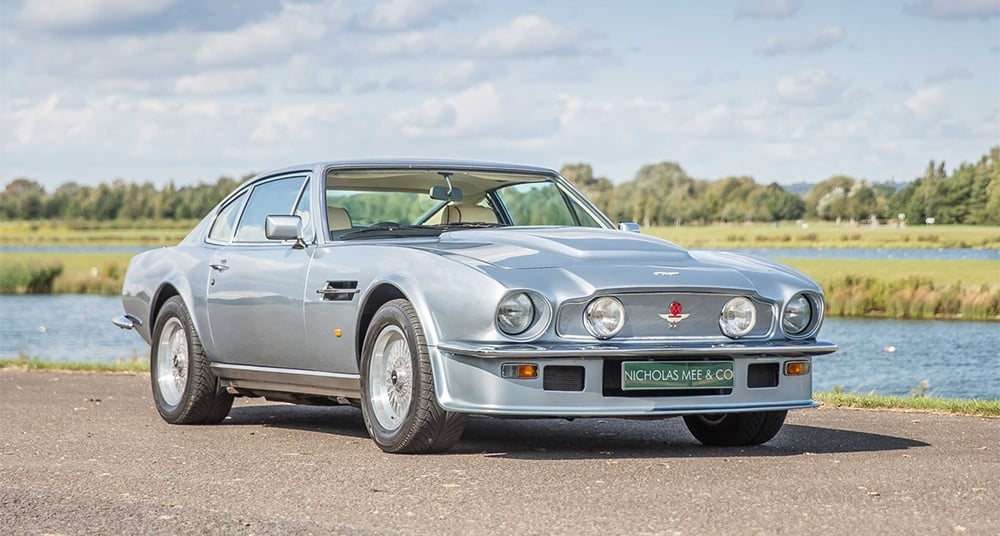
A hand-built British brute that despite weighing more than your average two-up two-down, would comfortably show its heels to a Ferrari Testarossa, the flagship 410bhp X-Pack version of the Aston Martin V8 Vantage is a car that key market influencer Simon Kidston of Kidston SA has seen enjoy a marked increase in interest of late. “There’s been a recent flurry of activity with these cars,” he comments. “And it just goes to show how the V8’s general silhouette might be shared by numerous models over a long period of time, but when you start doing your research and narrow those down to the best of the best, you’re left with a very small number of cars.” In case you’re wondering, Kidston’s ‘best of the best’ is a left-hand-drive, European-specification X-Pack in manual. Finding one is the hard bit – of the circa-137 X-Packs that left Newport Pagnell before 1989, just 43 were left-hand drive and even fewer were equipped with a manual ’box. “It has a great deal of presence, looks good value compared to its six-cylinder ‘DB’ predecessors, and definitely appeals to the current generation of collectors. And in that context of demographic change, this is definitely a car worth watching.”
GT avengers assemble
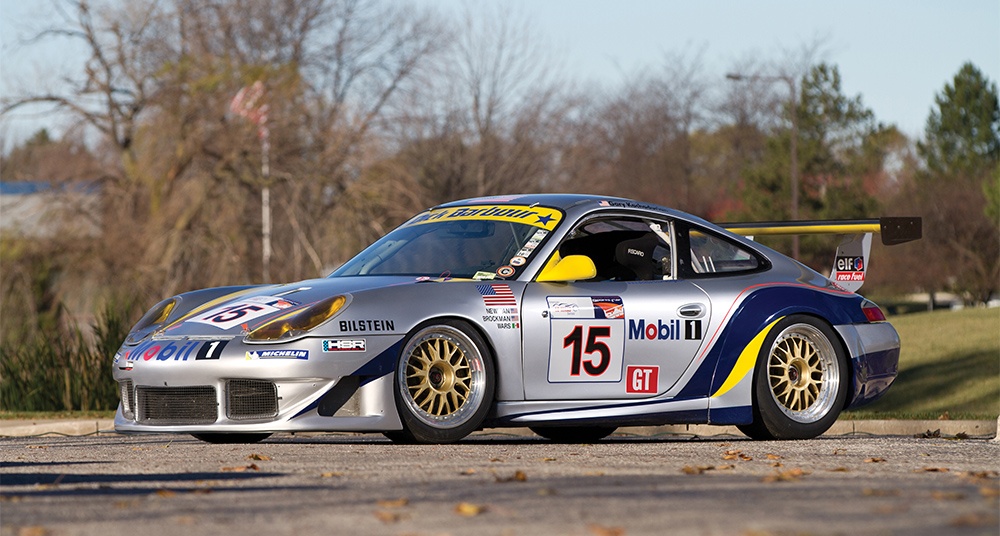
“This the year you’ll see modern-era GT racing cars with notable competition histories and built by prestigious brands such as Ferrari, Porsche, and Aston Martin march forward,” foresees James Cottingham of DK Engineering. He believes the increased worldwide interest in such machines can be attributed to the emergence of not one but two series for which they are eligible: Masters Endurance Legends and Global Endurance Legends, both of which flourished in 2018. “The reason those series have been so successful, particularly the fantastic high-speed demonstration at Le Mans Classic, is because everyone remembers these modern racers so vividly and they closely resemble the cars on which they’re based.” Peter Auto, which hosts Global Endurance Legends at its popular European historic events, recently announced that three competitive races for the series will be held for the first time in 2019. Porsche specialist Lee Maxted-Page couldn’t agree more, claiming now is the time to buy and get involved with this tight-knit yet growing community. Perhaps inevitably, he’d choose a Porsche as his weapon of choice. “Porsche was dominant in world endurance GT racing during the 1990s and 2000s, and the 996 GT3 R and 997 GT3 RSR won virtually everything they entered including the prestigious 24-hour races at Le Mans, Spa, Nürburgring, and Daytona,” he explains. “As always, buy the best you can. Ideally, that would be a car formerly campaigned by a famous team with a recognisable livery, with interesting racing history and in the correct condition.”
Save the Panda

A utilitarian design icon that found as much favour with extravagant Italian industrialists as it did with the working classes, the Giugiaro-designed Fiat Panda 4×4 is beginning to garner a loyal and growing fan base. We’ve long extolled the virtues of this alternative St. Moritz fashion statement and now it seems other influential figures from the collector car world have woken up to them, too. Take Lapo Elkann of Garage Italia Customs, for example, who recently presented a beautifully restored example once used by his grandfather Gianni Agnelli in St. Moritz. Or the new electrified Panda by Carlo Borromeo (also of Automobili Amos fame) built in collaboration with Garage Italia – a novel glimpse at how we might use our classics in a future that restricts – or, heaven forbid, even bans – the use of internal combustion-engined cars. The latter pricked the ears of Arthur Kar of L’Art De L’Automobile in Paris. “The Fiat Panda is a design classic and I love the idea of Carlo’s electric version as you’ll be able to enjoy its timeless looks and simplistic appeal in the city. They’re so cool I think I’m going to sell them in Paris!”
Last of the true hand-built Bentleys?
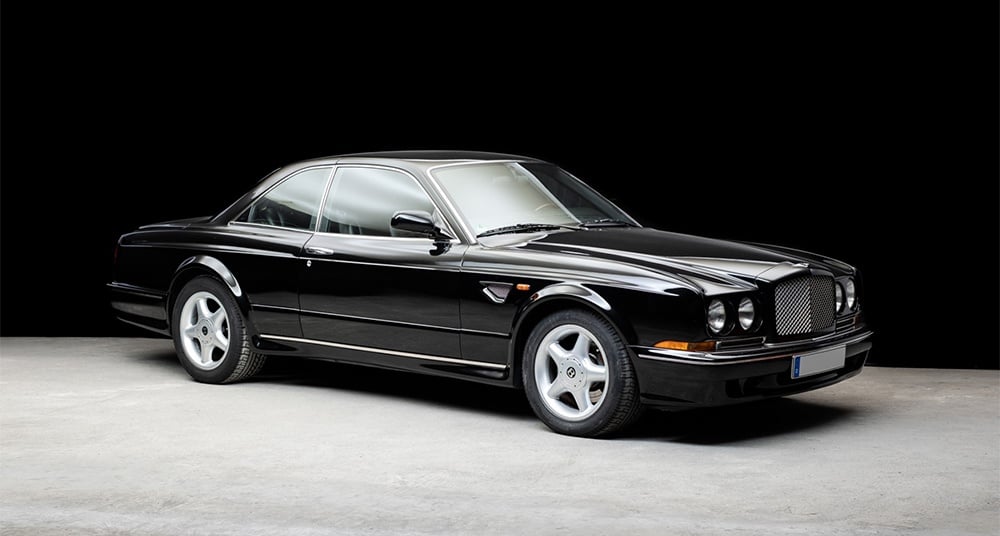
When influential figures such as fashion guru Guglielmo Miani, Automobili Amos frontman Eugenio Amos, and social media mogul Ted Gushue are all coveting a certain car, you know it’s going to be one to watch out for. And so is true of the opulent two-door Bentley Continentals of the 1990s and early 2000s. Simon Kidston is another who sees the appeal, not least because of their current bang-for-buck factor. “In many respects, these cars are the later equivalent of the Aston Martin V8 Vantage X-Pack,” he remarks. “They’re a similar size, boast huge old-fashioned V8s, are rare, and are hand-built so no two are alike.” The bruiser Bentleys in question, particularly those with coachwork by Mulliner, currently represent fantastic value according to Kidston, especially considering how hugely expensive they were new. “Everyone will have a different opinion as to which is best as there are so many sub-variants, but personally I like the Continental T as it’s a sort of modern-day Bentley Blower.” They’re also imposing, impossibly luxurious, and cut a carefree and effortlessly stylish dash.
Significance is key

“We’re not in a rising market and the good buys right now are the cars whose values have already been realigned,” comments Tom Hartley Jnr, “and one of those that I believe has bottomed out is the Porsche 911 Carrera 2.7 RS.” While during the market high point in 2016 he was selling Carrera RSs for £650,000, Hartley cites a straight and true car can be bought today for in the region of £500,000. “With prices of contemporary limited-edition 911s surging so high, people feel more comfortable spending similar money on an older and more historically significant model.” Dietrich Hatlapa of the Historic Automobile Group International concurs. “The smart money always looks at what’s gone down and the Carrera RS has certainly fallen out of favour over the last year,” he explains. “Of course, there are 1,500 cars out there, and we believe volume is the reason the HAGI Porsche index has dropped by almost five percent this year, but we’ve seen cars we know are solid examples sitting in showrooms for months and months. In a market where buyers are very much in the driver’s seat, there are great deals to be had for what is undoubtedly one of the greatest cars ever built.”
Straßenversions
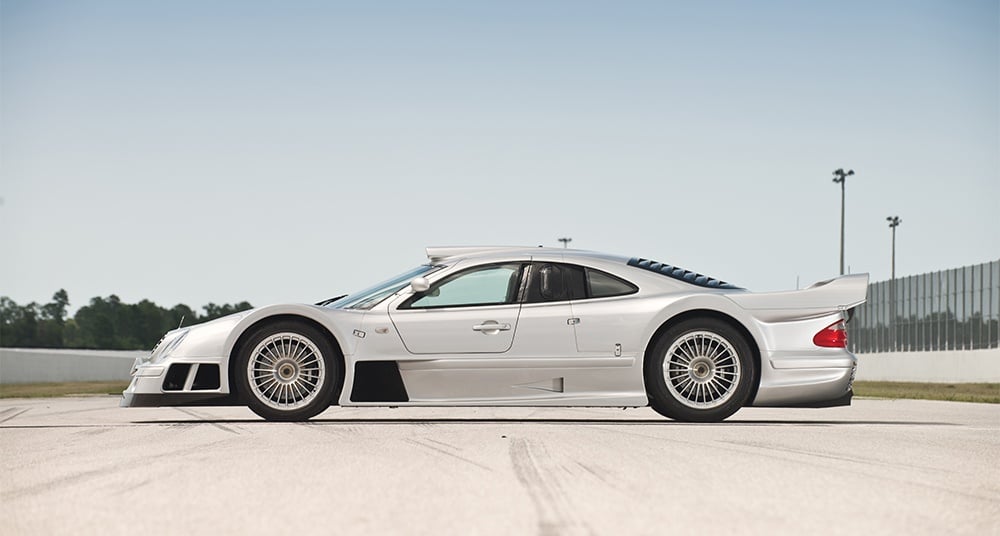
Max Girardo of Girardo & Co. reckons the most epic period of modern-era endurance racing was the late 1990s, when AMG-Mercedes’ CLK GTR and Porsche’s 911 GT1 took the fight to McLaren’s dominant F1. As a result, he thinks the wild and ultra-rare road-going homologation versions of each have yet to realise their true potential, especially given how the aforementioned McLaren has soared into the stratosphere. “McLaren F1 values are rocketing so high that for around a quarter of the price, the rarer CLK GTR and 911 GT1 Straßenversion are now attractive and worthy alternatives,” he comments. “There are just 25 of each, they’re completely outrageous, and built by two of the world’s most recognisable brands, both of which boast superb racing pedigree.” Indeed, the ninth CLK GTR built sold for 4.5m US dollars at Monterey in the summer, more than double what the last example presented at auction achieved in 2012. Girardo can also vouch for the fact that these true racers for the road (and we don’t say that lightly) aren’t as intimidating as they might appear – a few years ago, he actually took a 911 GT1 to the pub! “Yes, it was low, wide, and grumbly, but it was much less daunting than I thought it would be.”
The American Dream
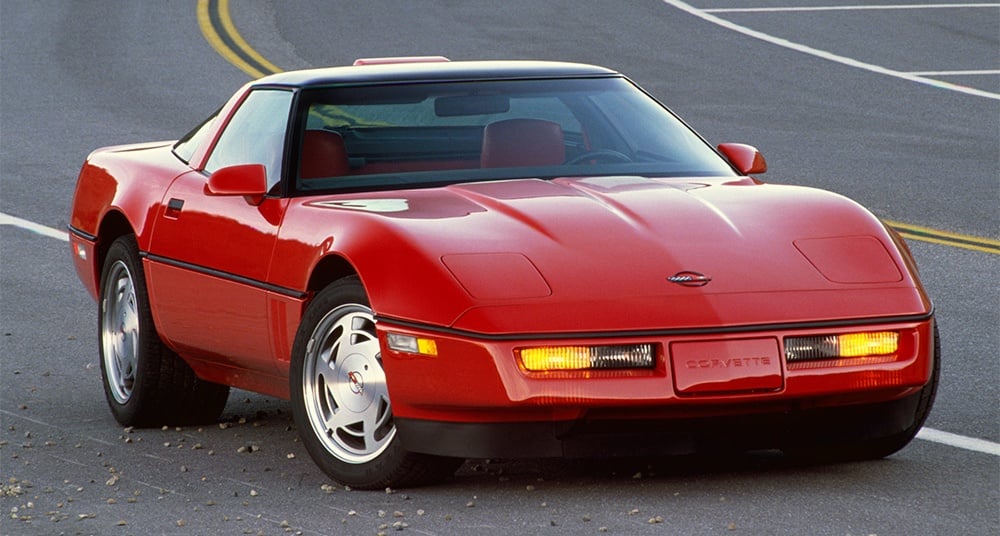
Getting down to the nitty-gritty, the grassroots of our passion, we posed a simple question to Graeme Hunt: what’s good value and affordable in today’s marketplace? “Simple,” he answers, “a Chevrolet Corvette C3 or C4.” It might seem like a left-field choice, but the esteemed gentleman dealer speaks from experience. “I had a C3 that had been lightly breathed on,” he continues. “I took it on a rally and it was every bit as quick as a Porsche Carrera RS Lightweight. What’s more, they’re extraordinary value for money – for a couple of cornflake boxes, a few conkers, and the loose change in your pocket, you can truly live the American Dream with your very own ’Vette.” The C3 was offered in so many guises that studying for a degree in neuroscience is probably more straightforward. But the long and short of it is this: buy an early chrome-bumpered car with matching numbers and a manual gearbox. “You won’t regret it,” Hunt concludes.
Not all clubs are created equal
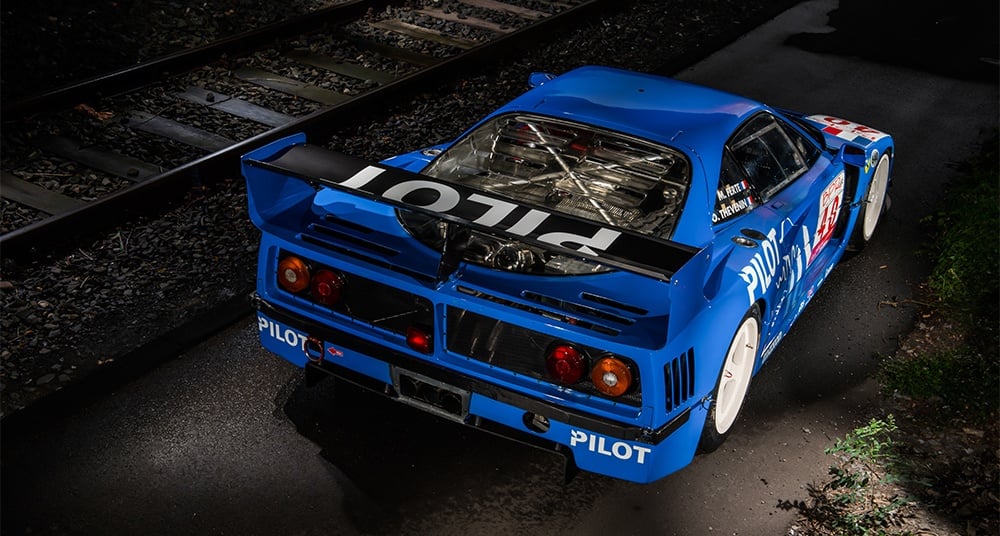
‘Not all clubs are the same’ Ferrari states on the presentation brochure for its new Club Competizione GT, a new non-competitive factory programme for Ferrari GT racing cars built between 1993 and today, poised to take place at five circuits around the world in 2019. And it’s got a point – the thought alone of 348 GT Competiziones and F40 GTEs sharing the asphalt of Mugello and Indianapolis with 575 GTCs and 458 Italia GT2s is enough to send your pulse racing. And the new initiative is one that Jan Lühn, a strong advocate and collector of these special Ferrari racers, believes will only heighten interest and, ultimately, values moving forward.
“Ferrari was well aware of the increased values of its modern racing cars and believed there was enough interest and were enough cars to run such a programme,” he comments. “And even if values of the most significant Works cars have doubled or even tripled in the last two years, I still believe they’re undervalued. Club Competizione GT will only serve to lend them more credibility.” He cites their rarity, straightforwardness to run, safety in comparison to 1950s and ’60s cars, and approachability as just some of the factors that make them so attractive to new collectors. Plus, with the emergence of not only Club Competizione but also the Masters and Global Endurance Legends series’, there are myriad opportunities to actually get out and use the cars as intended. Jean Guikas of GTC Guikas is of the same opinion, having seen younger customers less motivated by older historic Ferraris. “We had three Ferrari 575 GTCs for sale,” he comments. “We sold two very easily, the second of which for twice the price of the first, and we’ve had very high bids for the third, which has Le Mans history. But we’re going to keep that and I’m going to drive it in the series myself.”
Looking for the right car with which to enter Club Competizione and really make a statement with the big boys in the XX and F1 Clienti programmes? You’re in luck: RM Sotheby’s has just consigned the most successful F40 LM – a car James Cottingham described to us as the F40 – to its Paris sale in February.
Z for Zagato

Among the numerous automotive anniversaries due to be celebrated in 2019 is the centenary of Zagato, the great Milanese design house that has long shaped the metal of legendary, performance-oriented cars. Senior specialist at Gooding & Company David Brynan believes that the raft of shows poised to mark the milestone anniversary will shed new light on Zagato’s beautifully diverse back catalogue. “There’s going to be lots of shows around the world featuring Zagato cars and I expect everything from the Alfa Romeo Junior Z to the more exotic and challenging coach-built specials to be very popular,” he explains. Contrary to the fortifying market-wide trend for younger cars, Brynan notes that many new collectors entered the pre-War market in 2018, though they were buying top-tier sporting machines that offer exciting driving experiences rather than vast saloons with formal bodies. With this in mind, keep an eye out for Zagato-bodied Alfa Romeo 6 and 8Cs, particularly at Villa d’Este and Pebble Beach.
What goes around comes around
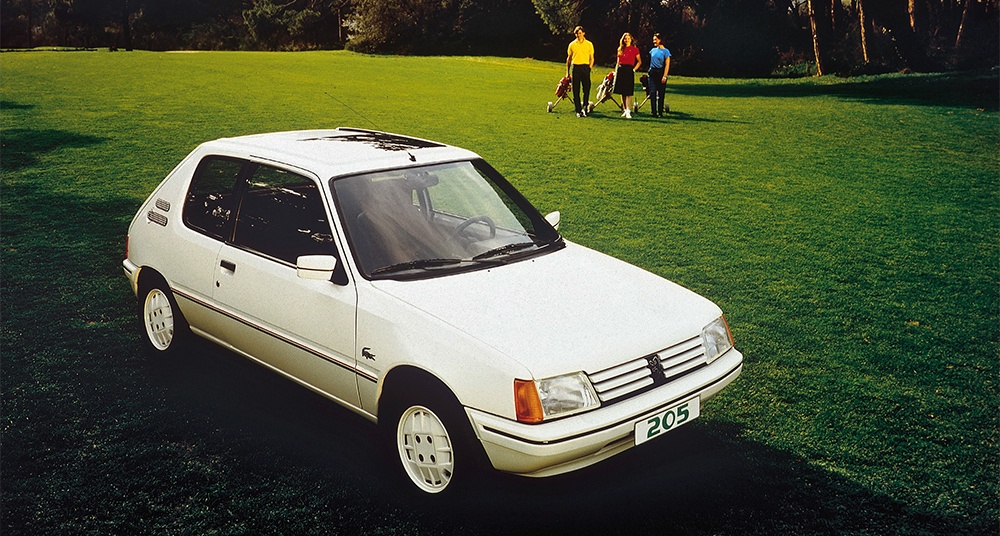
If you’d have told fashionistas 30 years ago that one day people would queue for days to pay through the nose for a toaster or a house brick plastered with a designer label, they’d have said you were bonkers. Back then, fashion didn’t bleed into other worlds to the frankly ridiculous extent it does today. But when it did, the outcome was often more novel as a result. Take the Peugeot 205 Lacoste, for example, an authentic fashion special edition the likes of which Arthur Kar, a man himself rooted in contemporary fashion, believes will become more sought after in 2019. “It’s a limited-edition version of the 205 painted in white with Lacoste’s crocodile logos on the side,” he explains. “It was unusual to see back then – the 205 was the French people’s car yet this one was rather elegant.” Just 23,000 were built, which when you consider Peugeot built over five million 205s in total, makes it exceptionally rare. “Find an original example in good shape, keep it, and use it,” Kar concludes. In a market as discerning as ever, particularly when it comes to younger classics, rarity and originality have shot to the top of many people’s criteria. It just so happens that this one fits the affordable bill as well.
Photos: Classic Driver Market / RM Sotheby’s / Peugeot / GM
